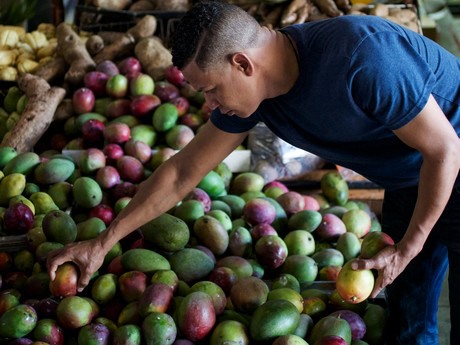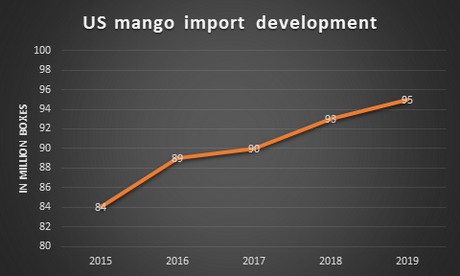With limited domestic production, the US heavily relies on Latin America for its mango supplies. With 95 million boxes imported from Latin America during the first nine months of the year, the continent is the largest provider of mangos to the US. When looking at the main mango producing nations, Mexico ships the largest volume by far. About 80 million boxes are exported to the US annually, followed by >12 million boxes for Ecuador, 12 million boxes for Peru, 8.5 million boxes for Brazil and 2 million boxes for Haiti. Although Haiti’s production is limited compared to some of the other growing nations, the country is having its best season to date.

Volumes out of Mexico are coming from the South Sinaloa Region (EMEX) and the North Sinaloa (Mangoz). “Due to heavy rain late in the season, South Sinaloa will be ending their season earlier than expected,” says Vlad Mitton with the National Mango Board. “In North Sinaloa however, the growing conditions have been favorable and are expected to go on with the season as previously expected.” Most likely, mangos out of this region will be shipped until the second week of October. Overall, the projected volume for Mexico is expected to be about 3 percent higher than last season.
Both the Brazilian and Ecuadorian seasons have been delayed due to adverse weather conditions. Ecuador is expected to start its season around mid-September and packers and exporters in Brazil are working to make up for the delay. Peru is expected to start the second week of October and end around March 2020.
Volume and value of imports increased significantly
Both demand for mangos and availability have increased over the years. “In the past five years, the volume shipped by Mexico, Ecuador, Peru, Brazil, Guatemala, Haiti and Nicaragua to the US has increased by about 13 percent,” Mitton said. When looking at the past 15 years, total import volume has increased more than 87 percent and import value (FOB) increased more than 120 percent. During that same time frame, availability per capita has increased more than 68 percent.
This graph shows a steady increase of US mango imports over the past five years. Source: National Mango Board.
Source: National Mango Board.
Varieties
Opposite to volume and value imported, mango varieties haven’t shown much change in recent years. “It takes years for mango plantations to get established and any shift in market demands related to a specific variety would take quite a while to be translated into practice from an agronomic standpoint,” Mitton explained. As a result, Ataulfo (honey mango), Madame Francis, Keitt, Kent and Tommy Atkins continue to be the main varieties.
For more information:
Angela Serna
National Mango Board
Ph: +1 (407) 629-7318 ext. 113
aserna@mango.org
www.mango.org
